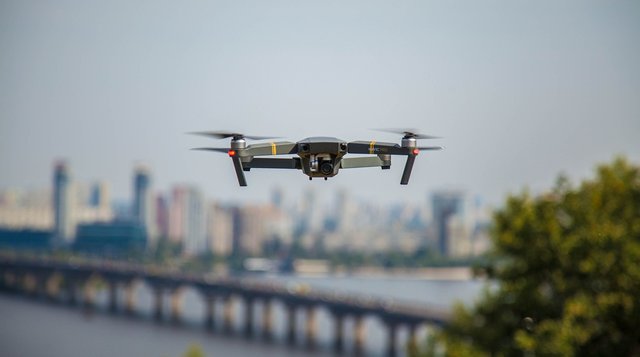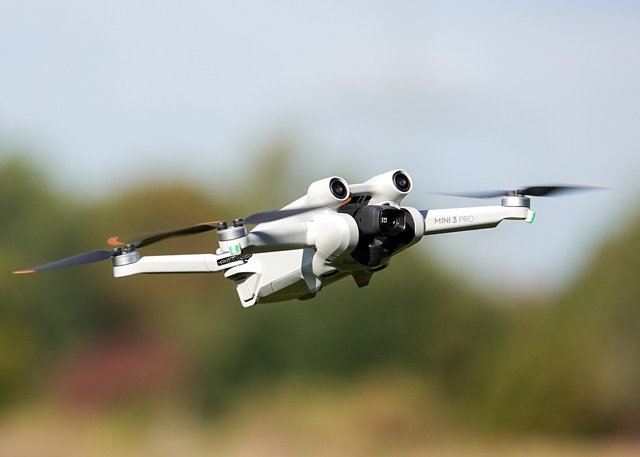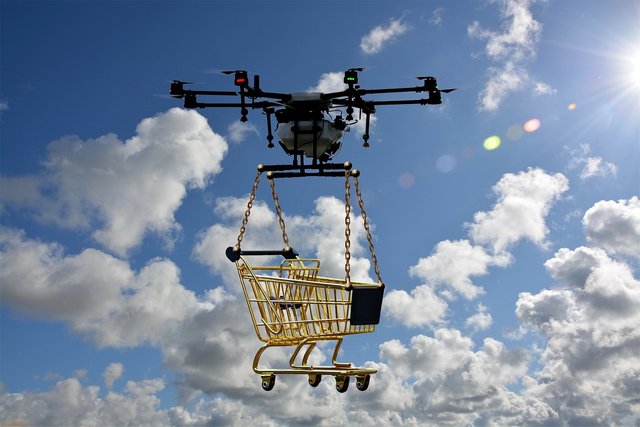"SEC | S20W6: "The Use of Drones in Agriculture"
It's the final week! What a good way to end the engagement challenge season 20. It was a nice time with the TEAM-AGRO.
What role have drones (unmanned aerial vehicles) played in modernizing agriculture? Use your country as an example if applicable |
|---|
Drones have taken on many important roles in modernizing agriculture in Nigeria, and I will explain some of the ways that I know.
Irrigation Management: Drones assist farmers in identifying areas with too much water and those that are dry and need more. This allows farmers to use their water resources more effectively.
Crop Spraying and Seeding: Drones have made crop spraying and seeding much easier. In fields, weeds often grow alongside crops, and spraying can harm the main plants. Drones can be programmed to target only specific areas or plants, applying the right amount of chemicals needed. This ensures that nearby people are not exposed to excessive chemicals.
Precision Agriculture: Drones play a significant role in Precision Agriculture by helping to use resources more efficiently and reduce waste. They assess important resources like water and fertilizer in specific areas and determine if more is needed or if none is required. This careful management helps minimize waste.
Livestock Management: Drones are also useful in livestock farming, as they can monitor the movement of animals and check their well-being.
Crop Health Assessment and Forecasting: Drones help assess crop health and predict future yields. This information allows farmers to plan ahead and make informed decisions about whether to invest more in their crops or focus on other options.
How do drones contribute to precision and efficiency in agricultural practices? What are the key benefits of using drones in agriculture? |
|---|
• Effective use of Resources: Drones assist farmers in using only the necessary resources for specific crops or livestock, minimizing waste and ensuring resources are not underutilized. This leads to lower costs for farmers, as they only need to buy what is essential.
• Productivity: Drones enhance the speed and productivity of crops and livestock by providing the right amounts of water, fertilizer, and other needs, ensuring nothing is missing that could slow down growth.
• Reduce Labor: Tasks that would take many workers hours can be completed by a drone in just minutes. This decreases the number of workers needed on the farm and lowers overall costs for the farmer.
• Monitoring of field: Drones allow farmers to monitor their fields from a screen, making it easier to spot and address issues with crops quickly, rather than waiting to inspect the area in person.
• Useful in spraying crops: Drones are particularly useful for spraying crops, targeting only the areas with unwanted plants. They apply the correct amount of spray needed to eliminate weeds without wasting resources.
Advantages of Using Drones in Farming
Precision: Drones target only the specific crops that need fertilizer and water, applying them exactly where required.
Lower Labor: Using drones significantly reduces the need for manual labor, leading to lower overall costs.
Efficiency: Drones can perform tasks much quicker than manual labor, and they do so with high accuracy.
Identification of crop diseases: Drones can identify diseases in crops, allowing for timely application of pesticides, which can lead to higher yields.
Helps Farmers make a good Decision: The data collected by drones helps farmers estimate their total crop production, enabling them to make informed decisions.
How do drones help manage soil moisture and nutrient levels in crops? |
|---|
Soil Moisture
Farmers use drones equipped with thermal sensors to identify areas with more or less water. Based on the information from these sensors, farmers can adjust their irrigation practices, ensuring the soil receives the right amount of water.
Multispectral and Hyperspectral Imaging is another type of sensor that helps to find out if there is too much water in the soil by looking at the plant's health. The drone uses this sensor to check how healthy the plants are and then indicates whether the moisture level is high or low.
Soil Nutrient Level
Multispectral Imaging for Nutrient Deficiency: This sensor, installed in drones, can detect plant diseases or attacks before they are visible to the naked eye. Once identified, farmers can take action to treat the plants and manage the disease.
Variable Rate Application: This sensor measures the varying nutrient levels in the soil and recommends or applies fertilizers in different amounts to specific areas based on the current nutrient needs of the soil.
Explain the significance of multispectral and hyperspectral imaging sensors in agricultural drones |
|---|
Multispectral Imaging Sensors
These sensors capture light at different wavelengths to assess plant health and soil conditions at any time.
Significance of multispectral imaging sensors in agricultural drones
Monitoring the health state of crops: These sensors track the health of plants and can identify issues before they are visible to the naked eye. This early detection allows farmers to address health problems promptly.
Dictate crop disease early: One of the main advantages of these sensors is their ability to spot early signs of disease or stress before they become apparent. This allows for quicker intervention, helping to prevent the spread and ultimately boosting crop yields.
Pest and Weed Control: With these sensors, identifying weeds becomes straightforward. When pesticides or herbicides are applied, they can be targeted specifically at weeds, sparing the crops.
Hyperspectral imaging sensors
These sensors, like the ones discussed earlier, also capture light in different wavelengths, but they cover a much wider range. This allows for a broader view on the screen, enabling them to gather more information.
Significance of Hyperspectral imaging sensors in agricultural drones
In-Depth Crop Health Analysis: This sensor provides a more thorough analysis of crop health because it covers more area and detects more details quickly, helping to address problems promptly.
Identifying Nutrient Deficiencies: The sensor closely monitors moisture and nutrients, making it easy to identify any deficiencies in plants. It can then recommend which nutrients should be added for better crop yield.
Identification of Disease: The sensor can detect diseases more easily, as it identifies issues at an early stage, even before they are visible to the naked eye. This allows for timely treatment or isolation to prevent the spread to other plants.
How drones help in soil mapping and why is it important for precision farming? |
|---|
Drones are essential for soil mapping as they provide key information about soil composition, moisture, nutrients, and more. Here are some ways drones assist in soil mapping for better clarity;
Multispectral sensors: Drones use light reflection from the soil to identify variations and determine what nutrients are missing and how much is needed.
Thermal sensors: These sensors measure soil moisture, helping to identify areas with high or low moisture levels. This information guides irrigation practices and crop selection for waterlogged regions.
Indicates soil state: Drones can assess soil health and recommend necessary nutrients to enhance soil quality, leading to better crop yields. Healthier soil results in more productive plants.
Developing Soil Maps: Using the data collected, drones generate precise maps of the field, highlighting deficiencies in specific areas, including pH levels and recommendations for necessary amendments.
I invite @mariami @nancy0 @ukagod





Upvoted. Thank You for sending some of your rewards to @null. It will make Steem stronger.
You've got a free upvote from witness fuli.
Peace & Love!
Hola estimada amiga. Que bueno que en tu país aprovechen los adelantos tecnológicos. Realmente los drones tienen una capacidad impresionante y su aporte a la agricultura es muy eficaz. Bendiciones y éxitos para ti
Thank you so much
Welcome to the agro-learning challenge season 20.
Observations and suggestions:
. You have nicely presented the role of drone in modernizing agriculture. Drone has taken the agriculture sector a step ahead in advancing its ways of carrying out farm operations. Just as listed, most operational demands have been solved using this tool. Efficiency and effectiveness has been observed so far. Good point presentation...
. YES! I agree with your views on how drone has improved detecting mositure and nutrientional soil levels. The attached sensors have been of great help to the overall value syatem. The thermal, multispectral, and hyperspectral imaging sensors madeneasy some of these demands.
. Generally, you have nicely presented your post.. Thank you for your participation. We hope to see you more in the community.